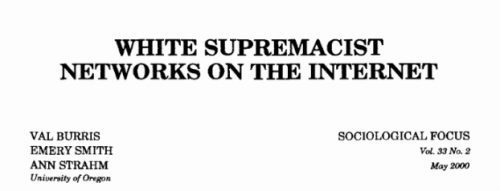In this paper we use methods of social network analysis to examine the inter-organizational structure of the white supremacist movement. Treating links between Internet websites as ties of affinity, communication, or potential coordination, we investigate the structural properties of connections among white supremacist groups. White supremacism appears to be a relatively decentralized movement with multiple centers of influence, but without sharp cleavages between factions. Interorganizational links are stronger among groups with a special interest in mutual affirmation of their intellectual legitimacy (Holocaust revisionists) or cultural identity (racist skinheads) and weaker among groups that compete for members (political parties) or customers (commercial enterprises). The network is relatively isolated from both mainstream conservatives and other extremist groups. Christian Identity theology appears ineffective as a unifying creed of the movement, while Nazi sympathies are pervasive. Recruitment is facilitated by links between youth and adult organizations and by the propaganda efforts of more covertly racist groups. Links connect groups in many countries, suggesting the potential of the Internet to facilitate a whitesupremacist “cyber-community” that transcends regional and national boundaries.
